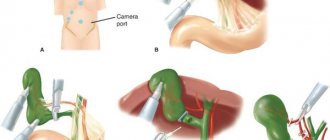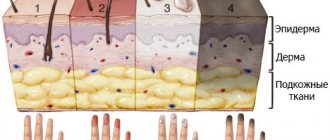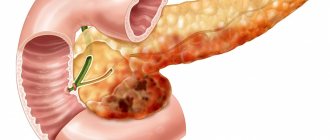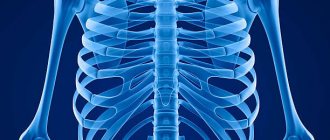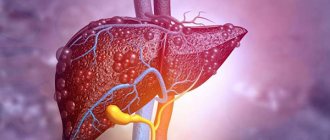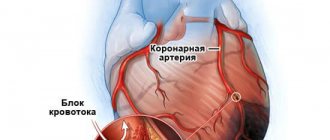Who is most likely to choke?
The risk of choking is highest in the following groups:
- children under five years of age,
- older people,
- suffering from neurological diseases,
- suffering from chronic acid reflux,
- suffering from acute respiratory diseases,
- people with injuries and anatomical abnormalities that affect the swallowing process (for example, with a cleft lip).
How to choose a toy as a gift?
Find out how to choose a safe toy for your child so that no play ends in an accident.
Some eating habits increase a person's chance of choking:
- eating food too quickly
- eating while standing, sitting in an awkward position or lying down,
- poor chewing of food,
- eating too dry and hard foods.
Causes of choking while eating
Bulbar syndrome
A pronounced symptom occurs with bilateral damage to the nuclei of the caudal group of cranial nerves, which are responsible for the act of swallowing. Patients choke while drinking and self-feeding is impossible. There is no swallowing reflex, so saliva flows from the corners of the mouth. Choking is also caused by atrophy of the tongue muscles, which makes patients unable to chew food normally. The main diseases accompanied by bulbar syndrome:
- Stroke
. - Inflammatory and infectious causes
: Lyme disease, tick-borne encephalitis, Guillain-Barré syndrome. - Genetic pathology
: Kennedy disease, porphyria. - Damage to nerve cells
: syringobulbia and syringomyelia.
Myasthenia gravis
Choking with myasthenia gravis is associated with weakness of the muscles of the larynx, which contributes to the free flow of food masses into the trachea and bronchi. The disorder is pathognomonic in the bulbar form of the disease - patients choke while eating and drinking liquids. Characterized by variability of manifestations during the day, aggravation of symptoms after physical or mental fatigue. Similar signs are detected in half of those suffering from a generalized form of myasthenia gravis.
Amyotrophic lateral sclerosis
Swallowing disorders are observed in the later stages of the disease, after the development of muscle weakness in the limbs. At first, choking on solid food is observed; as amyotrophic lateral sclerosis progresses, patients constantly cough and gag while eating. The symptom is combined with speech impairment; saliva usually accumulates in the mouth, which patients cannot swallow.
Mental illness
In this case, choking has no organic cause. Symptoms are caused by dysfunction of the cerebral cortex and inappropriate behavior in severe mental disorders. Patients choke on both drinks and solid food, and sometimes fluid flows through the nose. At the same time, a painful paroxysmal cough begins, soreness and discomfort occur in the throat.
Chronic obstructive pulmonary disease (COPD)
Normally, a person swallows food while exhaling, when the airways are closed by the epiglottis and soft palate. In COPD, there is indiscriminate contraction of the muscles of the pharynx and larynx, resulting in a reflex inhalation when swallowing food. An attack of severe coughing begins, which is associated with irritation of the larynx with pieces of food.
Rare causes
- Developmental anomalies
: hypoplasia of the larynx, cleft palate. - Gastrointestinal pathologies
: diaphragmatic hernia, reflux esophagitis. - Traumatic rupture of the vagus nerve
.
How to avoid choking from objects stuck in the throat?
Approximately 60 percent of choking deaths are caused by food getting stuck in the throat. The most dangerous foods are those whose pieces are close in size to the diameter of the respiratory tract. Encourage children to chew their food well
and make sure your older relatives have properly fitted dentures.
Try not to give your baby drinks and solid food at the same time. Do not allow your baby to eat on the go or while playing. Teach him to sit quietly and not be distracted while eating. Also, only buy toys for your child that are appropriate for their age
. Keep small items that may cause choking hazards locked away.
Diagnostics
A neurologist examines patients with complaints of choking on food. Many causes are already established on the basis of carefully collected clinical data, so the doctor conducts a detailed examination, checking tendon reflexes and assessing muscle tone. Next, specific diagnostic methods are prescribed, the most informative of which are:
- Proserine test
. The study is necessary to verify the diagnosis of myasthenia gravis. In this disease, after subcutaneous administration of 3 ml of proserine, muscle function is restored, the person can make swallowing movements. - Electroneuromyography
. The study helps confirm neuromuscular causes of choking. Characterized by a reduced response of muscle fibers to stimulation by impulses, rapid muscle fatigue is observed after repeated exposure. - MRI of the brain
. The method is necessary for visualizing brain tissue and identifying focal lesions. For amyotrophic lateral sclerosis, the appearance of a hyperintense MR signal in the area of the cerebral peduncles and internal capsule is typical. In case of stroke, the area of ischemia is determined. - Additional methods
. To exclude pathology of the digestive system, a survey radiography of the abdominal cavity and photographs using a contrast agent are performed. To exclude COPD, spirography and bronchoscopy are performed. Sometimes a consultation with a psychiatrist is prescribed.
How to help someone who is choking?
If a person chokes and coughs, this means that his airway is not blocked. There is no need to help him by hitting him on the back - let the person get rid of the stuck object on his own. Otherwise, your attempt to help may result in the stuck object slipping even deeper. If you can’t clear your throat on your own
, help the person take a more comfortable position - tilt him forward and down, ask him to take a slow, gentle breath and exhale sharply, encouraging him to clear his throat.
A large object stuck in the esophagus causes not only discomfort, but also an increased risk of damage to this part of the gastrointestinal tract. In this condition, urgent medical attention is required. If a person is choking
, unable to cough or speak, this means that a foreign body has entered the respiratory tract.
In this case, you need to urgently call an ambulance and try to help the victim yourself. To do this, the so-called Heimlich method
: 1. Grasp the victim with both hands from behind - place both hands between the navel and the bottom of the ribs. 2. Make one hand into a fist, place it on your stomach, and clasp it on top with your other hand. 3. Sharply bending both arms at the elbows, sharply press your fist on the victim’s stomach. Repeat this procedure until his airway is clear.
You need to know this
A fracture is a serious injury that requires mandatory and urgent medical attention. Find out why bones break and how to provide first aid for fractures.
Efficiency. Professionalism. Mercy
When the airways are completely blocked, the face turns blue for a short time, the blood vessels swell - this is especially visible on the neck.
Tyumen emergency doctors talk about what to do in such cases. The courses are free, and there is constant demand for them. More and more citizens want to know how to help their neighbors, and not only them. In past courses, the NEDUGAMNET.RU portal learned how to properly remove a foreign body from the respiratory tract. The instructions were given by emergency physician Andrei Rogotnev .
Many people know the Heimlich maneuver, which saved tens of thousands of people. A person’s life will depend on how correctly this technique is performed.
Procedure for performing the Heimlich maneuver
1. Wrap your arms around the victim’s back. Then we connect our hands in a lock so that one hand is in a fist - the thumb is facing the stomach, and with the second hand we grab the first.
2. The pressure point is located in the middle between the navel and the xiphoid process.
3. Direction of force - at an angle from bottom to top on the diaphragm.
4. Movements should be squeezing, jerky.
We press on the diaphragm and thereby create positive air pressure in the lungs, which is transmitted through the bronchi and trachea to the foreign body. In this case, an object that is stuck in the respiratory tract can fly out like a cork.
If a person starts coughing, this is good, it means air is passing into the lungs. There is a high probability that a foreign body has come out. Patting on the back is useless. This advice is only relevant for saving children.
Two options for removing a foreign body from a child’s respiratory tract
1. Place the child with his stomach on his knee, face down, holding him from below with his hand, and tap on the back with the edge of the palm of the other hand, with the back of your hand rhythmically press on the back in the area of the shoulder blades.
2. Grab your legs, if your strength allows, and perform smooth jerking movements. When the body rises, the entire contents of the abdominal cavity rise; when moving down, the contents press on the diaphragm, creating pressure in the lungs. Under no circumstances should you shake the child. It is best to perform this operation on something soft - in case the child slips out of your hands.
There are no hopeless situations
Situation: a large man has choked on something and is rushing around without controlling his actions - this is a dangerous period for the rescuer: the victim may unwittingly injure him. What can be done in this case? Andrei Rogotnev asked this question to the students at the course .
The phrases “I will save you” will not work. What to do? It turns out that there is no need to do anything in such a situation. Unless you call an ambulance. After some time, the victim will “calm down” and lose consciousness. The victim must be placed on his back. Next, we act as in the Heimlich maneuver, pressing our hands upward on the area between the navel and the xiphoid process.
We try to remove the foreign body with our fingers and monitor the pulse. If there is no pulse, we perform resuscitation by performing indirect cardiac massage to ensure blood flow to the organs. That is, we fight for a person’s life to the end!
It is strictly not recommended to perform a conicotomy - a puncture of the trachea below the thyroid cartilage, as the main characters in films about doctors do. In fact, this procedure is extremely complicated because:
- firstly, you need to know the exact place where to make the puncture;
- secondly, there is a high risk of damaging blood vessels that pass very close.
So you shouldn’t take on such responsibility, even if you heard something and know something.
If the object does not enter the respiratory tract, but into the esophagus, he does not need all of the above recommendations - there is no threat to life. You can try to wash down the “lump” in your throat with water or induce vomiting. It all depends on the size of the “lump”. First, you should calm the person down by explaining to him that nothing bad will happen to him. If you can’t cope on your own, seek medical help at OKB No. 1.
What gets stuck in your throat
Children often get candy wrappers, small bags, small toys, and balls into their respiratory tract. In adults, the foreign object most often turns out to be food. Therefore, one should never forget about the main commandment at the table: “When I eat, I am deaf and dumb.”
Talking or laughing while eating is very dangerous. During laughter, the epiglottis is open, and pieces of food enter the respiratory tract.
Yuri Shestak, NEDUGAMNET medical information agency
Helping an adult who is choking
First you need to remove any remaining food or, for example, a denture from the victim’s mouth. Next, sit the person on a chair and ask him to breathe slowly and deeply. Thanks to this, spasm of the respiratory tract and esophagus will be eliminated.
You need to put the person straight and stand behind him. Then hug him with your arms at the waist, slightly above the navel, joining your hands into a single fist. It must be pressed firmly against the left abdominal wall, thereby increasing internal pressure.
Thanks to this, excess air from the lungs will be eliminated, and the foreign body will be able to exit. If a person is unconscious, artificial respiration must be performed until the ambulance arrives.
suffocation
Treatment
Help before diagnosis
If the disorder occurs occasionally and is caused by the habit of talking while eating, specific therapy is not required. The appearance of regular choking while eating, as a result of which a person cannot eat normally, indicates severe damage to the brain or other systems, which requires qualified medical care.
Conservative therapy
Medical tactics consist of eliminating or slowing down the progression of the underlying disease that caused choking. For myasthenia gravis, physiotherapeutic methods and massage are indicated to improve muscle function. In severe situations, when independent food intake is impossible, parenteral nutrition is provided. For etiotropic and pathogenetic treatment, drugs such as:
- Anticholinesterase drugs
. Medicines from the proserin group improve neuromuscular transmission processes and eliminate the causes of choking. To achieve a lasting clinical effect, they are taken for several years. - Glucocorticoids
. Hormones are used in severe forms of encephalitis to prevent brain swelling. They are also recommended for rapid progression of myasthenia gravis and amyotrophic lateral sclerosis. - Antipsychotic drugs
. Prescribed for serious mental disorders, which are accompanied by swallowing disorders and food getting into the larynx. Antipsychotics and tranquilizers are effective for quick relief of symptoms.
How to protect yourself?
- Try to avoid situations that provoke fainting: do not stand for a long time or stand up suddenly.
- Isometric exercises are useful, which include a wrist expander, which trains the reflex to maintain optimal blood pressure in the body.
- Increase your fluid intake and do not limit your salt intake (unless contraindicated). This gives an increase in circulating blood volume.
- If you feel the approach of fainting in transport, cross your legs and sharply rhythmically tense your abdominal and thigh muscles several times. This will help increase blood flow from the lower extremities to the head.
- If you feel like you're starting to faint on the street, sit down on one knee, as if you were tying a shoe, or put one foot on a raised platform - this will protect you in case of a fall.
I accidentally choked on my saliva and can’t clear my throat: what should I do?
In this case, there is no one to provide first aid; you will have to save yourself. The main thing in this situation is not to panic.
I accidentally choked on saliva, I can’t clear my throat, what should I do?
- Of course, most often a person is lost, he is in a state of stress, and does not quite understand what needs to be done. However, there are simple manipulations that will help remove pieces of food from the respiratory tract. To do this, take a chair and place it.
- Rest your chest on the back so that it is in the area between the lower ribs and the navel. Now try to lean in such a way that the back of the chair hits this area.
- Hanging your head forward so that a slope is formed, pieces of food will easily leave the larynx. If this does not help, you can perform the Heimlich maneuver yourself. To do this, you need to place your palm bent into a fist in the area of the diaphragm.
- In this case, the second hand should clasp this fist. Now strike from the bottom up, while leaning forward. This way, you will create favorable conditions for pieces of food to leave the trachea.
Where does the crumb go when a person chokes?
Where does the crumb go if a person chokes? In the human body, there are two openings in the throat: the esophagus and the trachea. If a person talks or rushes while eating, food may go down the wrong throat. That is, instead of the esophagus it enters the trachea. This is what provokes a strong cough; if the pieces of food are large, then suffocation.
Heimlich maneuver
Is it possible to choke on saliva and die?
Yes, such situations are not uncommon. Most often, problems arise in preschool children. Usually these are infants, up to one year old. The fact is that up to 3 months, children do not have a developed cough reflex; they still swallow very poorly, so they can choke on milk or regurgitate masses.
Is it possible to choke on saliva and die?
- In this case, the child does not swallow, and some of the liquid remains in the mouth and may enter the trachea or respiratory tract. Up to 3 months, the situation is absolutely normal, which is why it is recommended to stand children up in a column after feeding so that leftover food and air can easily leave the mouth.
- However, if problems persist, if the child is more than three months old, you should consult a neurologist. Indeed, most often the problem is neurological; the child may have birth injuries. Due to neurological problems, the baby may not develop some reflexes, including the cough reflex.
- That is, the child cannot clear his throat or has problems swallowing. This is why some children spit up like a fountain after eating. This is also a consequence of a neurological problem.
- Therefore, you need to be constantly on guard with such children and under no circumstances put them to sleep in a separate room. The fact is that a child can choke at night and die. With such children it is necessary to sleep in the same room, preferably in the same bed, so that you can hear how they breathe, and if anything happens, provide first aid.
Choked on saliva

